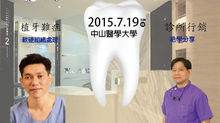【Dr. Istvan Urban 訪談分享-Sausage Technique】
- 承勛 楊

- May 16, 2016
- 2 min read

You are widely known for developing the “sausage technique.” Can you explain a little of the theory behind this procedure? Prior to the sausage technique, we had to utilize more autogenous bone blocks, which is a pretty invasive procedure. The sausage technique is minimally invasive compared to this, which is one of the biggest advantages. Now, we can utilize particulate bone graft composed of 50% of autogenous bone scrapings and a xenogeneic bone graft. So by mixing these two together, we need to harvest much less autogenous bone.
One big advantage is that the xeno-geneic bone graft maintains the volume of the regenerated crest, whereas the autogenous blocks tended to resorb over time, often meaning you had to repeat the procedure. We have more than 10 years of experience with this technique, which shows it is very stable. Why is it called the sausage technique? Well, simply put, it’s because we use a native collagen membrane, which we stretch out with mini-tacks to completely immobilize the bone graft. Using the membrane in this way, like a skin, looks like a little sausage and achieves a very stable bone graft. This membrane beautifully allows the blood vessels to permeate through from the periosteum and the host bone and will resorb in around 4 to 6 weeks. The term sausage technique is not a medical term; rather, it is a technical term to highlight to the clinician that immobilizing the bone graft with the collagen membrane is central to the technique.
How important are the properties of the materials that you use for this technique? They are very important. Let’s talk about the bone graft — Bio-Oss® (Geistlich) is the most well-studied graft material on the planet. It is very successful because it has the structure of native human bone, which allows for connection between the graft and the host bone.
The other important property is that it is dimensionally stable — it does not resorb too quickly. Allograft, for example, has poor dimensional stability, so we cannot use it for this technique.
The membrane again is native and, again, is very well studied. We know from the research that capillaries from the periosteum can pass through the membrane, which allows for nutrient transfer and vascularization, but at the same time, it does not allow for the ingrowth of soft tissue cells. So it excludes what needs to be excluded and allows what is required for good bone formation.




































Comments